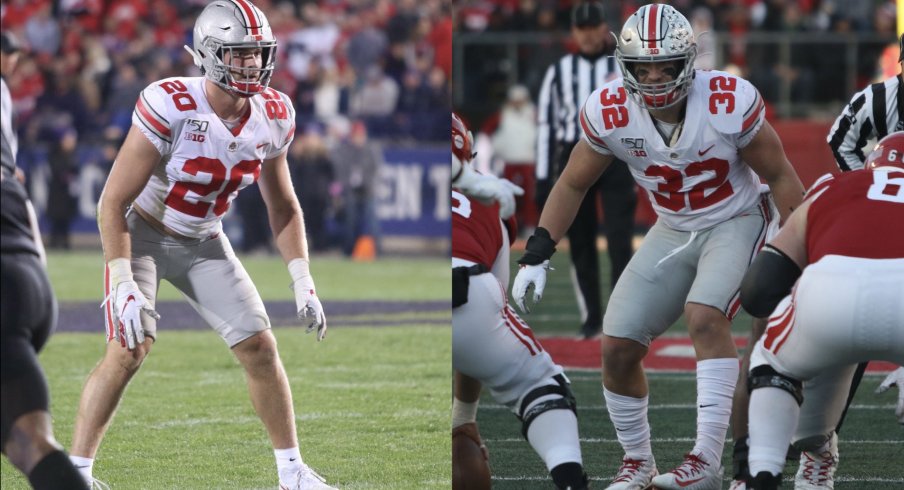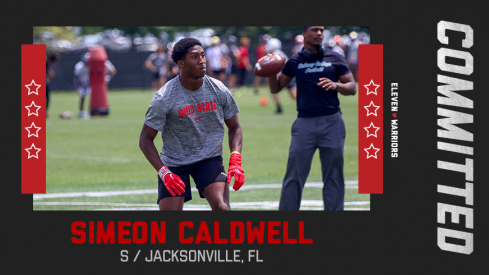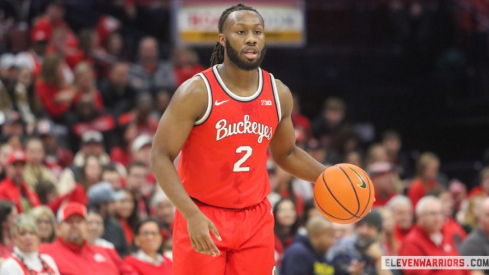Ohio State adds another top-100 safety as Simeon Caldwell commits to the Buckeyes.
Another NFL Draft has come and gone, with only the reigning national champion LSU Tigers hearing their names called more often than Ohio State Buckeyes. 10 former Buckeyes were selected this past weekend, seven of whom came from the nation's top defense in 2019.
Surely the number would have been higher had cornerback Shaun Wade elected to leave early and junior-to-be defensive end Tyreke Smith been eligible. Instead, those two return this fall to help rebuild a unit that will have plenty of talent but little experience.
One position group not hurting in that category, however, is the linebacking crew that was often overlooked without a Chase Young or Jeff Okudah among its ranks. But despite the loss of Malik Harrison, who earned all-conference honors and even a spot on the AP's All-America third team after leading the team in tackles, the Buckeyes return two major contributors in Tuf Borland and Pete Werner.
Each entering their third year as starters, the duo often bore the brunt of criticism for the entire defense's play in 2018, despite only being sophomores at the time. Now, as they each enter their final seasons in scarlet and gray, they're not only playing for an elusive national title, but for professional careers as well.
Both Borland (6'1", 234 lbs) and Werner (6'3", 242 lbs) have more than enough size to translate to the NFL game at their current positions of MIKE and SAM linebacker, respectively. Werner, meanwhile, showed great athleticism as he manned one of the "Buzz" players in the Cover-3 scheme last fall, operating in the alley opposite the aforementioned Wade and effectively playing the role of a defensive back as much as a traditional linebacker.
In Jeff Hafley and Greg Mattison's simplified scheme last season, the duo shined brightly, playing major roles in a run defense that improved from 57th to 9th in only one year. While Werner often lined up over the slot, he showed to be more than capable of making plays inside the box, shedding blockers next to Borland with relative ease.
Both players showed an uncanny ability to not only read the action in front of them but to avoid taking false steps and taking themselves out of the play. There is very little, if any, wasted movement from these two linebackers.
Not only do they move instinctively, but they both also did an excellent job of 'staying clean' when shuffling through 'the wash' that is the interior of the line. They kept their shoulders square to the line and shuffled to fill their reads, and avoided unnecessary collisions.
Like everyone on the OSU defense, they played with excellent leverage to the ball, a point hammered home by Buckeye coaches.
"The whole defense is built off of leverage," special teams coordinator and secondary coach Matt Barnes said at a recent coaching clinic. "Because we’ve got alley players, we’ve got force players. Our alley players push the ball inside, our force players push the ball inside-out. We are working together, we are truly leveraging the ball."
In his alley spot, Werner was responsible for setting the edge against outside runs, turning ball-carriers back to flowing 'force' players like Borland, who knew what to do when he arrived.
As previously mentioned, Werner showed unexpected athleticism last fall, performing in a variety of roles including free safety from time to time. But one area in which pro scouts will certainly take notice is his ability to close on the ball quickly.
“He's way more athletic than anybody gives him credit for,” Hafley said after Ohio State beat Cincinnati in September. “So that gives us a little bit of a weapon that he can move around and do things that you or people don't think that he can do.”
While many Buckeye fans embraced Werner's new reputation as an athletic peer to Harrison, many more remained hesitant to embrace Borland's athleticism (or supposed lack thereof). Though the Chicagoland native struggled at times in man-to-man pass coverage early in his career, many OSU supporters would have you believe he walks around in concrete shoes.
When examining the film closer, however, it's evident that the fourth-year junior moved as well as anyone between the tackles in 2019.
The NFL is now a passing league, of course, and both players will have to show more than simply reacting to the run game if they want to get drafted. Both are capable blitzers, be it against the run...
...or the pass.
When dropping into coverage, both players looked far more comfortable in the "vision and break" zone system implemented last season than the man-based schemes put in place by Greg Schiano. Like they did against the run, the linebackers made far more plays on the ball once they had their eyes on it, as they rarely made false steps while remaining efficient and deliberate in their drops.
Opponents still tried to isolate them in pass coverage, though, opting to take chances against these two instead of the first-round corners on either side. Penn State's Pat Freiermuth was set up to have a big day against Werner when the Nittany Lions visited the Horseshoe in November, but thanks to Werner's excellent technique, the big tight end hauled in six passes yet netted just 40 yards receiving and was kept out of the end zone.
“(Werner) was matched up with (Freiermuth) at times, and I thought they had a really good plan,” Hafley said after the game. “He's a good player. But 10 tackles for Pete. Guarded that guy most of the day. Played physical. Pete Werner's a great football player that in my mind is still underrated.”
While Werner has some work to do to hear his name called on the first day of next year's NFL Draft, a potentially similar path was laid out for him last week when the Seattle Seahawks selected Jordyn Brooks late in the first round. Brooks was a multi-year starter at Texas Tech who started as a SAM linebacker outside before moving inside his senior year.
The Buckeyes run the same Cover 3 scheme as Seattle, San Francisco, Atlanta, Dallas, and the LA Chargers, meaning they keep three linebackers on the field more often than other teams who opt for nickel personnel as their base. With good athleticism and proven versatility, Brooks will get the chance to play at all three spots right away as a Seahawk.
Should one of those aforementioned franchises be looking for help at linebacker, Werner may be an attractive choice, as he's been seen making a move similar to Brooks by getting reps at the WILL linebacker spot during spring practice.
For Borland, his course to the league may be fairly straightforward. As college offenses double down on option and ball-control passing games, college defenses have focused on playing in space more than ever before.
Though the NFL has followed a similar trajectory, the power running games of the Tennessee Titans and San Francisco 49ers showed that the league's physical aspect has not disappeared entirely. NFL defenses use multiple personnel groupings every single week and would be more than happy to have a middle linebacker capable of shedding blocks and reading the run like Borland, even if he has to be subbed out on third downs.
One year from now, Ohio State will look to outpace Clemson, Alabama, and LSU with more drafted players than any other program. While most of the focus will be on which team gets to welcome Justin Fields, Wyatt Davis and Wade, NFL scouts will have their eyes on Borland and Werner for the next year as well.



